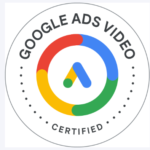
Using Google’s Display Network (GDN) to increase brand awareness is an effective way to reach a broader audience and create visibility for your brand. Here are steps to help you leverage GDN for this purpose:
- Set Clear Objectives: Define your specific goals for brand awareness. Are you looking to increase website traffic, social media followers, or simply create brand recognition? Having clear objectives will guide your campaign.
- Create High-Quality Visual Content: Visual content such as eye-catching banners and videos are crucial for GDN campaigns. Ensure your visuals are professional, on-brand, and visually appealing to capture attention.
- Identify Your Target Audience: Google allows you to target specific demographics, interests, behaviors, and locations. Research your audience to understand their preferences and habits, then use this information to narrow down your targeting options.
- Choose Campaign Types: Google Display Network offers several campaign types, including:
- Standard Display Campaign: For running image and text ads on websites.
- Smart Display Campaign: Uses machine learning to optimize targeting and ad creatives.
- Gmail Campaigns: Deliver ads to Gmail users’ Promotions tab.
- YouTube Campaigns: Display ads on YouTube videos and channels.
- Set a Budget: Determine your daily or campaign budget. Google will help you estimate the potential reach and clicks based on your budget.
- Create Compelling Ad Copy: Write persuasive ad copy that conveys your brand message effectively. Highlight unique selling points and call-to-action (CTA) buttons to encourage engagement.
- Utilize Responsive Ads: Responsive ads automatically adapt to different ad placements, making your campaign more versatile and efficient. Include multiple headlines, descriptions, and images for variations.
- Leverage Remarketing: Create remarketing lists to target users who have previously visited your website or interacted with your brand. This helps reinforce your brand message to a warm audience.
- Optimize Landing Pages: Ensure that the landing pages you’re driving traffic to are well-designed, relevant, and provide a seamless user experience. A consistent brand message is key.
- Monitor and Adjust: Regularly check your campaign performance. Google Ads provides data on impressions, clicks, click-through rates (CTR), and conversions. Use this information to make necessary adjustments. If an ad isn’t performing well, consider tweaking the targeting or ad creatives.
- A/B Testing: Conduct A/B tests to refine your ad creatives and messaging. Test different headlines, images, and ad copy to see what resonates best with your audience.
- Geotargeting: Depending on your business, consider geotargeting to focus your ads on specific regions where your target audience is most active.
- Optimize for Mobile: Ensure that your ad creatives are mobile-friendly since a significant portion of GDN traffic comes from mobile devices.
- Utilize Ad Extensions: Ad extensions can provide additional information and links, enhancing your ad’s visibility and relevance.
- Evaluate and Iterate: Periodically review your campaign’s performance and make adjustments to optimize your ROI. The digital advertising landscape is dynamic, so staying flexible and responsive is essential.
- Consider Using Google Analytics: Google Analytics can provide deeper insights into user behavior on your website, helping you refine your targeting and messaging.
Remember that GDN is just one part of your brand awareness strategy. It can work in conjunction with other marketing efforts, both online and offline, to build a consistent and strong brand presence. Continuously analyze and adapt your campaigns to achieve the best results for your brand awareness goals.


